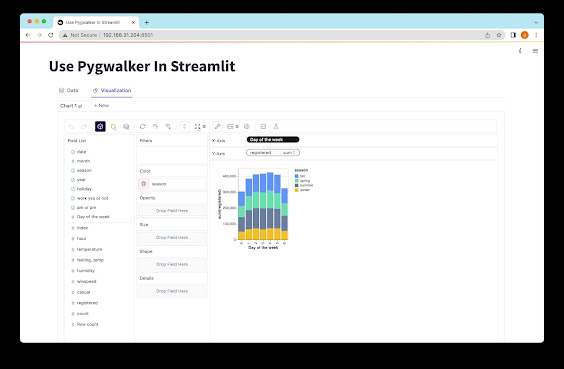Can Chat GPT be Detected for Plagiarism? - Open AI Master
 Can Chat GPT be Detected for Plagiarism? The use of AI language models like Chat GPT in academic writing has raised concerns about plagiarism detection. In this article, we will discuss the possibility of detecting plagiarism in Chat GPT-generated content and the challenges associated with it. ## The Popularity of Chat GPT in Academia Chat GPT, an advanced AI language model capable of generating human-like text, has gained immense popularity in academia. Students, particularly those who struggle to meet deadlines, have turned to Chat GPT as a tool to aid in their academic writing. However, the use of such models raises questions regarding academic integrity and plagiarism. ## The Issue of Plagiarism Detection Plagiarism remains a serious offense in academia, with potentially severe consequences for students. Universities have incorporated plagiarism detection software to identify instances of plagiarism in student work. These software tools scan texts and compare them to existing sources to detect copied content. ## Can Chat GPT-generated content be detected for plagiarism? Yes, plagiarism detection software can identify similarities in language and context, even if the content is generated by an AI language model like Chat GPT. However, detecting plagiarism in Chat GPT-generated content poses significant challenges. ### The Challenges of Detecting Plagiarism in Chat GPT-generated Content 1. The Sophistication of Chat GPT Chat GPT is a highly sophisticated language model that generates text similar to human-written content. It can learn from extensive data, producing contextually relevant and grammatically correct text. This sophistication makes it challenging for plagiarism detection tools to differentiate between content generated by Chat GPT and text written by a human. 2. Lack of Training Data Plagiarism detection tools rely on substantial training data to identify similarities between texts. However, the use of Chat GPT in academic writing is relatively new, resulting in a scarcity of training data for plagiarism detection tools. This scarcity makes it difficult for the software to accurately detect instances of plagiarism in Chat GPT-generated content. 3. Defeating Plagiarism Detection Software Students are constantly finding new ways to bypass plagiarism detection tools. Techniques such as altering text structures, paraphrasing, and synonyms can be employed to modify Chat GPT-generated content, making it challenging for software to flag instances of plagiarism. ## The Limitations of Plagiarism Detection Software for Chat GPT-generated Content Plagiarism detection software may not be foolproof in detecting Chat GPT-generated content used for cheating in academic settings. The high sophistication of Chat GPT allows it to generate text that closely resembles human-written content, making it difficult for detection tools to differentiate between the two. Students can easily modify the generated content to deceive plagiarism detection software, using synonyms or rephrasing sentences to make it appear different from the original source. Consequently, plagiarism detection software may fail to identify such content as plagiarized. Another limitation lies in the software's ability to detect plagiarism in paraphrased content. Chat GPT can generate unique and original text, but it can also be used to paraphrase existing content. In such cases, plagiarism detection software may struggle to identify similarities between the original source and the paraphrased Chat GPT-generated content. ## The Future of Plagiarism Detection for Chat GPT-generated Content With the continuous advancement of AI technology, it is expected that plagiarism detection software will become more sophisticated in detecting Chat GPT-generated content. Turnitin, for instance, is actively collaborating with universities to develop anti-cheating software specifically designed for AI-generated content, including Chat GPT. This software will employ advanced algorithms to identify similarities in language and context, even when content has been modified or paraphrased. In addition to software development, universities can implement other preventive measures to discourage students from using Chat GPT-generated content for cheating. Assigning topics that require critical thinking and original research, rather than regurgitating existing information, can ensure a deeper understanding of the subject matter. Alternative assessment methods, such as oral exams, presentations, and group projects, can also be effective in minimizing cheating opportunities. ## Conclusion In conclusion, while plagiarism detection software can identify instances of plagiarism in Chat GPT-generated content, there are challenges associated with its detection. The sophistication of Chat GPT, scarcity of training data, and techniques used to circumvent plagiarism detection tools make it difficult to determine the authenticity of AI-generated content. However, as AI technology progresses, it is likely that plagiarism detection software will evolve to effectively detect Chat GPT-generated plagiarism. Until then, universities can implement various strategies to prevent students from utilizing Chat GPT for cheating purposes. ### FAQs **1. Can plagiarism detection software accurately detect Chat GPT-generated content?** Plagiarism detection software can identify similarities in language and context, even in Chat GPT-generated content. However, the high sophistication of Chat GPT and the techniques used to defeat plagiarism detection tools pose challenges for accurate detection. **2. How can universities prevent students from using Chat GPT-generated content for cheating?** Universities can assign topics that encourage critical thinking and original research, use alternative assessment methods like oral exams and group projects, and collaborate with software developers to improve plagiarism detection capabilities. **3. Will plagiarism detection software catch modified Chat GPT-generated content?** Plagiarism detection software may struggle to identify modified Chat GPT-generated content, especially if the modifications involve paraphrasing or using synonyms. However, advancements in AI technology are aimed at improving the software's ability to detect such instances of plagiarism. --- **About Author**:  Katie Jung is a passionate writer and AI enthusiast, sharing insights on AI, ChatGPT tips, generative AI, and startups. Her goal is to make AI accessible and empower readers to explore the transformative potential of artificial intelligence. Join her on this exciting journey of discovery.
Read more about Data Analysis
Read more about Data Analysis

Comments
Post a Comment